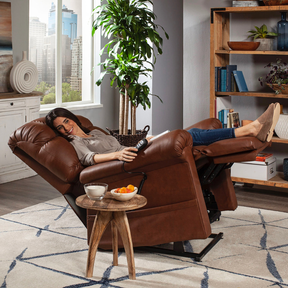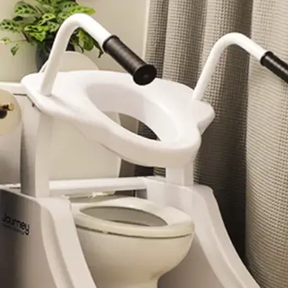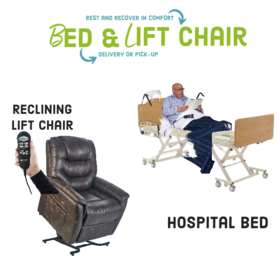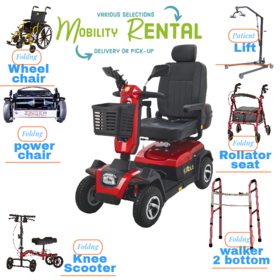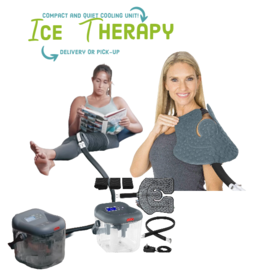Blog What is the difference between Coloplast ostomy supplies and Hollister ostomy supplies?
Thu, 12/15/2022 - 17:13

A surgical incision known as an ostomy permits your body to expel feces, pee, or both through your abdomen. People may require an ostomy for various reasons, but typically a digestive or urinary system problem is to blame. Usually, if your doctor tells you you require an ostomy, it's to preserve your life. Ostomy procedures can be brief and reversible in some cases, or they might be long-term fixes. Several retailers, including Coloplast and Hollister, offer the best quality ostomy supplies to improve your life after the treatment.
What are ostomy supplies?
 For usage on a person who has a surgically produced opening (stoma) to divert urine or feces outside the body, ostomy supplies are regarded as medically required. For patients with colostomies, ileostomies, or urinary ostomies, ostomy supplies are life-changing. If a liquid barrier is deemed medically required, it may be a liquid, spray, individual wipes, or swabs. Both are not thought to be medically necessary to use.
For usage on a person who has a surgically produced opening (stoma) to divert urine or feces outside the body, ostomy supplies are regarded as medically required. For patients with colostomies, ileostomies, or urinary ostomies, ostomy supplies are life-changing. If a liquid barrier is deemed medically required, it may be a liquid, spray, individual wipes, or swabs. Both are not thought to be medically necessary to use.
For those with continent stomas, using Colostomy bags, stoma caps, stoma plugs, stoma absorptive covers, or gauze pads is considered medically required to prevent or manage drainage. Just one of these supplies is considered medically necessary on any given day. For members with urinary ostomies, a bottle or Colostomy bag secured with Ileostomy flanges is deemed medically required for drainage at night.
Who needs ostomy supplies?
Many different medical issues can lead to ostomy surgery. However, it can also be caused by a bowel obstruction, urinary or stool incontinence, or a digestive or urinary system injury. It can be the outcome of surgery to eliminate diseases, such as cancer and inflammatory bowel disease.
A colostomy is frequently required due to colon or rectal cancer. A colostomy and removing a portion of the large intestine are necessary. Stool incontinence, an accident, or inflammatory bowel disease are examples of further medical issues. A temporary colostomy may be required if the large intestine must recover from surgery.
The Different kinds of Ostomy Supplies
- The contact between the member's skin and the pouching system is a solid barrier (wafer) with a measured thickness and adhesive property. Barriers can be used separately, integrated into a "1 piece" pouch, produced with an Ileostomy flange, and included in a "2 piece" pouch system (skin barrier with flange), or any combination of these. often using a pouch without an inherent skin barrier.
- A pectin-based barrier with special additives known as an extended wear barrier achieves a stronger adhesive seal, resists breakdown by urine or bowel effluent, allows for longer wear intervals between changes, and allows for normal wear times for those who are unable to achieve them with standard barriers.
- Barriers with built-in convexity typically have an outward curvature created by plastic integrated into the barrier, allowing for improved stoma protrusion and skin adhesion.
- Ostomy skin barriers larger than 4x4 inches relate to the size of the skin barriers themselves, not the circumference of any tape.
- A faceplate is a solid barrier between the member's skin and the pouch. Typically, it is made of plastic, rubber, or enclosed metal. There isn't any pectin-based material that is a necessary component of a faceplate, and it doesn't have any adhesive properties. It is removable and repositionable numerous times. It is fastened with an elastic belt or a different adhesive. Typically, the faceplate includes clips for attaching the belt.
- Stomal output is collected using a Colostomy bag. A pouch used to collect bowel effluent might be "drainable," meaning it has a bottom outlet where feces can be removed, or "closed," meaning it has a sealed base but no outlet. Anti-reflux mechanisms and a tap or spigot for releasing the urine's contents are typically
 included in "urinary" pouches.
included in "urinary" pouches. - A pouch with a "2 piece" system can be connected to a skin barrier with an Ileostomy flange since it contains a flange.
- An individual ostomy vent that the member can add to a pouch to expel gas is called an "ostomy vent, any type, each." When a vent with a filter is built into a pouch by the manufacturer, those pouches also come with an ostomy vent. They are referred to as ostomy pouches with filters.
- Sheets, pads, or crystals can be used as absorbent material added to the ostomy pouch. An ostomy pouch features a urine drainage valve and a faucet-style tap.
- A lever-style flange locking mechanism is known as a locking flange. It is distinct from clear push-on pouch securing systems. The skin barrier or pouch flange may include the mechanism (2-piece system).
- Only drainable pouches—not urine pouches—are utilized with ostomy clamps. Ostomy pouches come with ostomy clams. Only when ordered as replacement ostomy clamps must be purchased separately.
How to Choose Colostomy bags and Other Ostomy Supplies?
Supplies?
You can choose an adequate Colostomy bag and Ileostomy flanges with the assistance of the ostomy experts. When selecting a pouching system, factors include the type of stoma, your body shape, structure, problems with concealment, daily activities, and desire.
You should feel secure using an ostomy bag and pouching system if there are no leaks between when the pouching method is applied and removed, and the skin around the stoma is protected. You should be able to maintain a constant wear period of three to four days. You should ask the ostomy doctors to evaluate your ostomy system if you cannot keep a regular wear time.
Tags
- contest
- event
- supplies
- design
- brand
- video
- Compression
- upright walker
- four wheel walker
- rollator
- wheelchair
- Ostomy
- elegantly
- elegantly
- accessibility
- Mobility
- knee walker rental
- knee scooter sales
- knee scooter
- post operative shoe
- anti-embolic stockings
- pain management
- cryotherapy therapy
- hot cold compress
- compression stockings
- lift chair
- wound Care
- air purifier
- fall prevention
- cushion
- oxygen therapy
- cpap, bipap
- Hospital Bed
- Life Aide
- EMS
- recovery
- splint
- knee brace
- Bathroom
- patient lift
- medical supply
- Wound dressings
- Lightweight Wheelchair
- hospital beds for sale
- sky medical supplies rentals
- compression socks
- Tegaderm Dressing
- Adult Diapers
- Rollator Walker
- Bed Wedge Pillow
- Hospital beds
- Patient Lifts and Slings
- Portable Oxygen Concentrator
- Patient Lift Slings
- knee scooter rental
- folding mobility scooter
- mobility scooter
- medical shoes
- raised toilet seat
- hospital beds for rent
- lift chair recliner
- chair lift
- electric wheelchair
- Power Lift Recliners for Elderly
- Senior Walkers
- Bedside Commodes
- whill wheelchair
- compression hose
- Whill Electric Wheelchairs
- Bariatric Wheelchair
- Recliner Chairs with Lift
- Colostomy Bag
- Crutches
- Medical Wedge Pillow
- skin barrier tape
- Post Surgery Ice Machine
- Bedside Commode
- chair lift recliners
- cane holder scooter
- lift chair prices
- drop arm commode
- rollator walker with ergonomic seats
- Hospital Bed Rental
- Wheelchair Tray
- Golden Technologies Lift Chair
- Nova GetGo Junior Rollator
- power lift recliners
- Knee Scooters and Crutches:
- stand up walker for seniors
- stand up walker as seen on TV
- Women's Walking Canes
- Knee Immobilizers
- Bed Wedge Pillow
- Medical Supply Stores
- Sit to Stand Lifts
- Grab Bars
- Compression Gloves
- incontinence bed pads
- Lift Reclining Chair
- Knee Walker Scooters
- Hernia Belt Near You
- Mobility Scooter Stores Near Me
- Folding Knee Walker
- Oxygen Concentrator Store
- Inogen Battery
- Electric Bed Frames
Related Posts
Get weekly articles in your inbox on the latest medical supply news, exclusive deals, and helpful health tips.
Mon, 04/04/2022 - 03:04
Tips for living well with bowel and bladder incontinence
Having trouble controlling one's bladder or incontinence issues can be very difficult for people of all ages, affecting their everyday lives.
Wed, 06/14/2023 - 00:57
Step-by-Step Guide: How to Use a Hoyer Lift with a Two-Person Assist
Using a Hoyer lift with a two-person assist requires careful coordination and communication. Here's a step-by-step guide:
